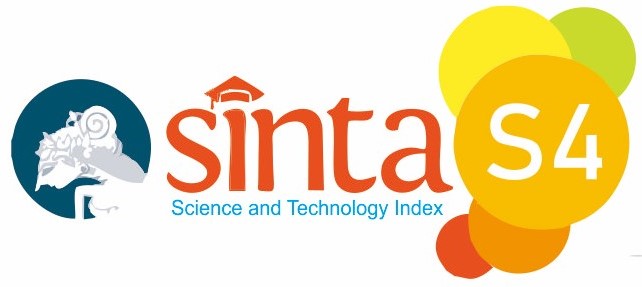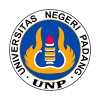ANALYSIS OF THE CONFORMITY OF WELDING ENGINEERING PRACTICUM FACILITIES TO COMPETENCY STANDARDS AT SMK NEGERI 1 GUGUK
Abstract
In the midst of the Industrial 4.0 era, there is an escalating demand for competent and highly skilled labor in the manufacturing and construction sectors, making this need increasingly urgent. Welding technology, as a crucial expertise in these fields, necessitates high-quality vocational education to produce competent labor. SMK Negeri 1 Guguk focuses on providing welding engineering education in accordance with industry standards. This study aims to analyze the adequacy of the welding engineering practicum facilities at SMKN 1 Guguk with prevailing competency standards. The method employed is a mixed-method approach combining qualitative and quantitative techniques, including surveys, interviews, documentation, and observations. The results indicate that while certain aspects of the practicum facilities, such as educational media and equipment, comply with the standards outlined in Permendikbud Number 34 of 2018, there are significant deficiencies in the infrastructure, facilities, furniture, and practical tools. The identified challenges include budget constraints, lack of equipment maintenance, and inadequacies in providing the latest technology. This study recommends enhancing practicum facilities, integrating the latest technologies, and improving equipment maintenance methods. These recommendations are anticipated to support the development of student competencies and enhance their readiness for the global labor market. Furthermore, the findings of this study are expected to impact vocational education broadly and contribute to the literature in the field of welding engineering vocational education, thereby creating a more prepared and highly competitive workforce.
References
Alojaiman, B. (2023). Descriptive Analysis and Future Research Directions. 1–16. https://doi.org/https://doi.org/10.3390/pr11051318
Anriani, N., Gholobi, M. I., Sultan, U., Tirtayasa, A., & Government, S. C. (2024). Developing an Instrument to Measure the Effectiveness of the Link and Match Learning and the Availability of the Practical Laboratory Facilities on the Quality of Vocational School Graduates. 4(1), 1–7. https://doi.org/DOI. 10.52889/jpig.v4i1.311
Camacho, D., Panizo-LLedot, Á., Bello-Orgaz, G., Gonzalez-Pardo, A., & Cambria, E. (2020). The four dimensions of social network analysis: An overview of research methods, applications, and software tools. Information Fusion, 63(1), 88–120. https://doi.org/10.1016/j.inffus.2020.05.009
Celik, H., & Zehir Topkaya, E. (2024). Preservice English Teachers’ Preparedness to Teach: Stakeholders’ Perceptions in Teaching Practicum. Journal of Teacher Education, 75(1), 92–106. https://doi.org/10.1177/00224871231185369
David Curiel, Fernando Suarez, and P. V. (2023). Advances in Robotic Welding for Metallic Materials : Automation Techniques. Metals, 711(13), 1–22. https://doi.org/. https://doi.org/10.3390/met13040711
Dunwoodie, K., Macaulay, L., & Newman, A. (2022). Qualitative interviewing in the field of work and organisational psychology : Benefits , challenges and guidelines for researchers and reviewers. February, 863–889. https://doi.org/10.1111/apps.12414
El-haggar, N., Amouri, L., Alsumayt, A., & Alghamedy, F. H. (2023). The Effectiveness and Privacy Preservation of IoT on Ubiquitous Learning : Modern Learning Paradigm to Enhance Higher Education. 1–21. https://doi.org/https://doi.org/10.3390/app13159003
Familoni, B. T., Onyebuchi, N. C., & Solutions, T. (2024). Augmented And Virtual Reality In U.S. Education: A Review: Analyzing The Impact, Effectiveness, And Future Prospects Of Ar/Vr Tools In Enhancing Learning Experiences. 6(4), 642–663. https://doi.org/10.51594/ijarss.v6i4.1043
Felipe, L., Oliveira, R. De, & Siqueira, J. (2022). Information organization and representation in digital cultural heritage in Brazil : Systematic mapping of information infrastructure in digital collections for data science applications. Journal Association for Information Science and Technology, 74(6), 1–20. https://doi.org/10.1002/asi.24650
Ghanad, A. (2023). An Overview of Quantitative Research Methods. 06(08), 3794–3803. https://doi.org/10.47191/ijmra/v6-i8-52
Guest, G., Namey, E., & Chen, M. (2020). A simple method to assess and report thematic saturation in qualitative research. PLoS ONE, 15(5), 1–17. https://doi.org/10.1371/journal.pone.0232076
Hendren, K., Newcomer, K., & Sumner, N. (2023). How qualitative research methods can be leveraged to strengthen mixed methods research in public policy and public administration ? October 2020, 468–485. https://doi.org/10.1111/puar.13528
History, A. (2021). The evaluation of facilities and infrastructure standards achievement of vocational high school in the Special Region of Yogyakarta. 25(2), 207–217. https://doi.org/https://doi.org/10.21831/pep.v25i2.46002
Huang, Z., Zheng, H., Li, C., & Che, C. (2024). Application of Machine Learning ‐ Based K ‐ means Clustering for Financial Fraud Detection. Academic Journal of Science and Technology, 10(1), 33–39.
Ikpe, S. A. (2023). Technopreneurial Readiness Skills of Welding and Fabrication Technology Students in Technical Colleges in Akwa Ibom State , Nigeria. 6(3), 166–180. https://doi.org/10.56201/rjpst.v6.no3.2023.pg166.180
Irfan1, Andi Prastowo, Siti Fatonah, Fildza Malahati4, Putri Jannati, U. A. N. (2023). Analysis of Research Skill in Understanding Research Method to Prospective Teacher at Islamic Elementary School. 9(1), 61–71. https://doi.org/https://doi.org/10.19109/jip.v9i1.17090
Kaenong, H. A., & Alexandri, M. B. (2023). Analysis Projection of the Fulfillment of Priority Facilities and Infrastructures for Vocational High School / Sekolah Menengah Kejuruan ( SMK ) Using System Dynamic to Increase School Participation Rates in Central Kalimantan Province , Indonesia. https://doi.org/https://doi.org/10.3390/su152416696
Khan, N., Solvang, W. D., & Yu, H. (2024). 4 . 0 Technologies in Spare Parts Warehousing in the Oil and Gas. Logistics, 8(1), 1–21. https://doi.org/10.3390/logistics8010016
Legi, H., Damanik, D., & Giban, Y. (2023). Transforming Education Through Technological Innovation In The Face Of The Era Of Society 5.0. Educenter : Jurnal Ilmiah Pendidikan, 2(2), 102–108. https://doi.org/10.55904/educenter.v2i2.822
Limna, P. (2023). The Impact of NVivo in Qualitative Research : Perspectives from Graduate. Journal of Applied Learning & Teaching, 6(2), 1–13. https://doi.org/10.37074/jalt.2023.6.2.17
Negeri, I., Raniry, A., & Aceh, B. (2022). The Management of Facilities and Infrastructures in Educational. 6(1), 87–102. https://doi.org/https://doi.org/10.47766/idarah.v6i1.92
Nwuke, T. J., & Nwanguma, T. K. (2024). Provision and Utilization of Physical Resources for Effective Teaching and Learning Effectiveness in Public Universities in Rivers State Provision and Utilization of Physical Resources for Effective Teaching and Learning Effectiveness in Public Universiti. International Journal of Applied and Scientific Research (IJASR), 2(2), 227–244. https://doi.org/10.59890/ijasr.v2i2.1412
Prasetya, F., Fajri, B. R., Wulansari, R. E., Primawati, & Fortuna, A. (2023). Virtual Reality Adventures as an Effort to Improve the Quality of Welding Technology Learning During a Pandemic. International Journal of Online and Biomedical Engineering (IJOE), 19(2), 4–22. https://doi.org/10.3991/ijoe.v19i02.35447
Prasetya, F., Fortuna, A., Samala, A. D., Rawas, S., Mystakidis, S., Syahril, Waskito, Primawati, Wulansari, R. E., & Kassymova, G. K. (2024). The impact of augmented reality learning experiences based on the motivational design model: A meta-analysis. Social Sciences and Humanities Open, 10, 100926. https://doi.org/10.1016/j.ssaho.2024.100926
Purwanto, M. B., Hartono, R., & Wahyuni, S. (2023). Essential Skills Challenges for the 21 st Century Graduates : Creating A Generation of High-Level Competence in The Industrial Revolution 4 . 0 Era. 2(3), 279–292. https://doi.org/https://doi.org/10.55927/ajae.v2i3.3972
Rahman, M. M., Tabash, M. I., Salamzadeh, A., Abduli, S., & Rahaman, M. S. (2022). Sampling Techniques (Probability) for Quantitative Social Science Researchers: A Conceptual Guidelines with Examples. SEEU Review, 17(1), 42–51. https://doi.org/10.2478/seeur-2022-0023
Schneider, S., Wessels, A., & Pilz, M. (2023). Theory and Practice of Teaching and Learning in the Classroom – Lessons from Indian Industrial Training Institutes. Vocations and Learning, 99–120. https://doi.org/10.1007/s12186-022-09305-8
Sharma, L. R., Bidari, S., Bidari, D., Neupane, S., & Sapkota, R. (2023). Exploring the Mixed Methods Research Design : Types , Purposes , Strengths , Challenges , and Criticisms. Global Academic Journal of Linguistics and Literature, 5(1), 1–12. https://doi.org/10.36348/gajll.2023.v05i01.002
Sjolie, D., Dami, Z., Larsson, C., & Raza, T. (2024). Integration of Research on Immersive Learning Environments and Education in Welding. 660–671. https://doi.org/10.3233/ATDE240207
Vardi, S., & Collings, D. G. (2023). What ’ s in a name ? talent : A review and research agenda. May 2020, 660–682. https://doi.org/10.1111/1748-8583.12500
Venatius, A. S., Hatib, A., & Boniface, O. (2023). Developing Framework for Teaching Technical Skills to Metalwork Undergraduates in Vocational-Based Education in Nigeria. 2, 11–20.https://doi.org/https://doi.org/10.30880/jtet.2023.15.02.002
Vila-henninger, L., Dupuy, C., Ingelgom, V. Van, Caprioli, M., Teuber, F., Pennetreau, D., & Bussi, M. (2024). Abductive Coding : Theory Building and Qualitative ( Re ) Analysis. January 2023. https://doi.org/10.1177/00491241211067508
Waskito, Fortuna, A., Prasetya, F., Wulansari, R. E., Nabawi, R. A., & Luthfi, A. (2024). Integration of Mobile Augmented Reality Applications for Engineering Mechanics Learning with Interacting 3D Objects in Engineering Education. International Journal of Information and Education Technology, 14(3), 354–361. https://doi.org/10.18178/ijiet.2024.14.3.2057
Submitted
Copyright (c) 2024 Jurnal Vokasi Mekanika

This work is licensed under a Creative Commons Attribution 4.0 International License.








.svg_.png)


